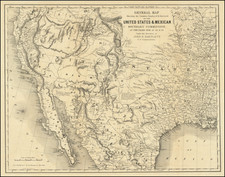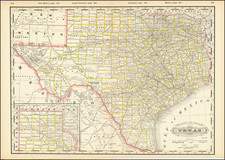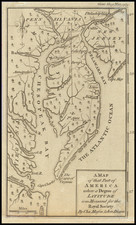Striking example of De Fer's rare map of the Southeastern United States, Mississippi Valley, Texas, the Rio Grande Valley and Gulf of Mexico. A very fine map of North America from north of Virginia on the east coast down to Florida, and then on to the north of Cuba, then westward across the Gulf of Mexico to Texas and New Mexico, then north to lands occupied by the Apache people. To the east of the Apache lands are various rivers (including the Mississippi) and finally Lake Erie, the Iroquois and Virginia again. The map shows the colonial trade and exploration routes, including La Salle's route to Matagora Bay and British trade routes from the east coast to the Indian tribes on the Mobile River. Includes numerous vignettes of Indian life with two images of Indian encampments/villages in the upper left corner. Rare variant imprint recorded by Cumming, with examples located in the Library of Congress, Clements (University of Michigan) and Kendall copies. The map is based upon De L'Isle's manuscript map of 1701. A landmark map in the history of the region. Archivally backed with Japan paper to support several minor tears and some paper thinness, but overall a gorgeous example of this rare and highly sought after map. Cumming 169.
Nicholas de Fer (1646-1720) was the son of a map seller, Antoine de Fer, and grew to be one of the most well-known mapmakers in France in the seventeenth century. He was apprenticed at twelve years old to Louis Spirinx, an engraver. When his father died in 1673, Nicholas helped his mother run the business until 1687, when he became the sole proprietor.
His earliest known work is a map of the Canal of Languedoc in 1669, while some of his earliest engravings are in the revised edition of Methode pour Apprendre Facilement la Geographie (1685). In 1697, he published his first world atlas. Perhaps his most famous map is his wall map of America, published in 1698, with its celebrated beaver scene (engraved by Hendrick van Loon, designed by Nicolas Guerard). After his death in 1720, the business passed to his sons-in-law, Guillaume Danet and Jacques-Francois Benard.

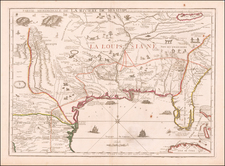








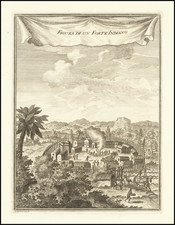

![[Republic of Texas] Texas](https://storage.googleapis.com/raremaps/img/small/94176.jpg)
